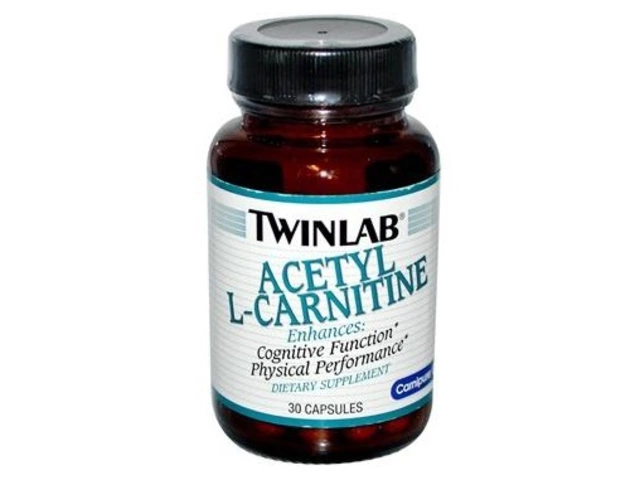
Duricef vs. Antibiotic Alternatives: Decision Helper
Recommended Antibiotic:
| Antibiotic | Spectrum | Dosing | Side Effects | Cost Tier |
|---|---|---|---|---|
| Duricef (Cefadroxil) | Gram-positive skin & urinary pathogens | 1-2×/day | GI upset, rash, rare allergic reaction | Medium |
| Cephalexin | Similar to cefadroxil | 4×/day | Diarrhea, mild liver enzyme rise | Low |
| Amoxicillin | Gram-positive respiratory & otitis media | 3×/day | Diarrhea, rash | Low |
| Clindamycin | Gram-positive, anaerobes, MRSA | 3×/day | C. difficile colitis risk | Medium-High |
| Azithromycin | Atypical respiratory, some Gram-negatives | 1×/day (5-day course) | QT prolongation, GI upset | Medium |
| Doxycycline | Broad-range, including intracellular bugs | 2×/day | Photosensitivity, esophageal irritation | Low-Medium |
| Penicillin V | Streptococcal throat infections | 3×/day | Allergic rash, anaphylaxis (rare) | Low |
| Trimethoprim-sulfamethoxazole | UTI, some skin infections | 2×/day | Kidney impact, Stevens-Johnson risk | Low |
Duricef Pros
- Twice-daily dosing (convenient)
- Good coverage for skin & UTIs
- Safe in penicillin allergy (mild cases)
- Effective against beta-lactamase-producing bacteria
Duricef Cons
- Limited spectrum (not for atypicals/MRSA)
- May not work in high-resistance areas
- Not suitable for severe penicillin allergy
- Renal dose adjustment needed in CKD
Alternatives
- Amoxicillin/clavulanate for resistant bugs
- Clindamycin for MRSA
- Azithromycin for atypicals
- Doxycycline for broad coverage
Key Takeaways
- Duricef (cefadroxil) is a first‑generation cephalosporin with good activity against many skin and urinary‑tract bugs.
- It’s taken once or twice daily, which is easier than some alternatives that need four‑times‑daily dosing.
- For penicillin‑allergic patients, cephalosporins like Duricef are often safe, but cross‑reactivity can occur.
- When bacteria produce beta‑lactamases, drugs such as amoxicillin/clavulanate or doxycycline may work better.
- Cost and local resistance patterns should guide the final choice.
Choosing the right antibiotic feels like a puzzle: you want it to hit the bug, stay tolerable, and not break the bank. Duricef is a brand name for cefadroxil, a first‑generation oral cephalosporin antibiotic that’s often prescribed for skin, bone, and urinary‑tract infections. But is it always the best pick? This guide lines up Duricef against the most common alternatives, breaks down the deciding factors, and helps you know when to stick with it or switch to something else.
What is Duricef (Cefadroxil)?
Duricef contains cefadroxil, a beta‑lactam antibiotic belonging to the cephalosporin class. It works by disrupting bacterial cell‑wall synthesis, leading to cell death. Because it’s a first‑generation agent, its strongest activity is against Gram‑positive organisms like Staphylococcus aureus (including some methicillin‑sensitive strains) and Streptococcus pyogenes. It also covers many Gram‑negative rods that cause uncomplicated urinary‑tract infections (UTIs).
Typical dosing: Adults usually take 500mg every 12hours, though a once‑daily 1g regimen is approved for certain infections. For children, the dose is weight‑based (10-30mg/kg per day divided twice). The drug’s long half‑life (about 1.5-2hours) allows the twice‑daily schedule, which many patients find convenient.
Common side effects include mild gastrointestinal upset, rash, and rarely, transient elevation of liver enzymes. Severe allergic reactions are uncommon but possible, especially in people with a history of penicillin allergy.
How to Choose an Antibiotic - Decision Criteria
Before we stack Duricef against other options, let’s outline the factors clinicians (and savvy patients) weigh:
- Spectrum of activity - Does the drug hit the likely pathogen?
- Safety profile - How likely are side effects or allergic cross‑reactivity?
- Dosing convenience - Once‑daily vs. multiple doses per day.
- Resistance patterns - Local data on how often the bug evades the drug.
- Cost & insurance coverage - Out‑of‑pocket expense for the patient.
- Special populations - Pregnancy, children, kidney impairment.
Each alternative we discuss scores differently on these criteria, which the comparison table later will make crystal‑clear.
Alternative Antibiotics - Quick Overview
Below are the most frequently mentioned substitutes for Duricef when treating skin, respiratory, or urinary infections.
- Cephalexin - Another first‑generation cephalosporin, usually taken 4‑times‑daily. It shares a similar spectrum but has a slightly higher cost in some regions.
- Amoxicillin - A penicillin‑type drug, highly effective for ear, sinus, and some skin infections. It’s taken three times a day and is cheap, but many bacteria now produce beta‑lactamases that inactivate it.
- Clindamycin - A lincosamide that covers many anaerobes and MRSA‑type skin bugs. It’s given three times daily and can cause C.difficile colitis.
- Azithromycin - A macrolide with a long half‑life, allowing once‑daily dosing for 3‑5 days. Useful for atypical respiratory bugs but not the best for uncomplicated UTIs.
- Doxycycline - A tetracycline that covers a broad range of organisms, including some resistant strains. Taken twice daily; photosensitivity is a notable side effect.
- Penicillin V - The classic narrow‑spectrum penicillin for streptococcal throat infections. Requires eight‑hourly dosing and is contraindicated in penicillin‑allergic patients.
- Trimethoprim‑sulfamethoxazole - A sulfonamide combo often used for UTIs and some skin infections. Twice‑daily dosing; watch out for renal issues and rash.
Side‑by‑Side Comparison
| Antibiotic | Primary Spectrum | Typical Dosing Frequency | Key Side Effects | Cost Tier (AU$) |
|---|---|---|---|---|
| Duricef (Cefadroxil) | Gram‑positive skin & urinary pathogens | 1-2×/day | GI upset, rash, rare allergic reaction | Medium |
| Cephalexin | Similar to cefadroxil | 4×/day | Diarrhea, mild liver enzyme rise | Low |
| Amoxicillin | Gram‑positive respiratory & otitis media | 3×/day | Diarrhea, rash | Low |
| Clindamycin | Gram‑positive, anaerobes, MRSA | 3×/day | C.difficile colitis risk | Medium‑High |
| Azithromycin | Atypical respiratory, some Gram‑negatives | 1×/day (5‑day course) | QT prolongation, GI upset | Medium |
| Doxycycline | Broad‑range, including intracellular bugs | 2×/day | Photosensitivity, esophageal irritation | Low‑Medium |
| Penicillin V | Streptococcal throat infections | 3×/day | Allergic rash, anaphylaxis (rare) | Low |
| Trimethoprim‑sulfamethoxazole | UTI, some skin infections | 2×/day | Kidney impact, Stevens‑Johnson risk | Low |

When Duricef Is the Right Choice
If you need a drug that covers both skin and uncomplicated urinary bugs, has a twice‑daily schedule, and you’re not allergic to β‑lactams, Duricef shines. It’s especially handy for patients who struggle with four‑times‑daily pills (like cephalexin) or who live in areas where resistance to amoxicillin is high.
Typical scenarios:
- Uncomplicated cellulitis caused by S.aureus (non‑MRSA) or S.pyogenes.
- Simple cystitis in adult women without known drug allergies.
- Post‑surgical prophylaxis for clean orthopaedic procedures where a cephalosporin is recommended.
When to Reach for an Alternative
Duricef’s spectrum doesn’t cover atypical pathogens (like Mycoplasma or Chlamydia) or MRSA. In those cases, pick a drug that specifically targets the bug.
- MRSA‑suspected skin infection: Clindamycin or trimethoprim‑sulfamethoxazole.
- Community‑acquired pneumonia with atypicals: Azithromycin or doxycycline.
- Penicillin‑allergic patients: Cephalexin can be used if the allergy is mild, but for severe IgE‑mediated reactions, a macrolide or doxycycline is safer.
- High local resistance to cephalosporins: Consider amoxicillin/clavulanate or a fluoroquinolone (though the latter is reserved due to safety concerns).
Safety Pitfalls to Watch
Even a well‑tolerated drug can trip up if you ignore a few red flags:
- Renal dosing: Cefadroxil is cleared by the kidneys. Patients with creatinine clearance < 30mL/min need a 50% dose reduction.
- Cross‑reactivity: Roughly 1‑10% of people with a true penicillin allergy react to cephalosporins. Ask your doctor about skin testing if you’ve had an anaphylactic reaction before.
- Prolonged therapy: Courses longer than 14days increase the risk of gut flora disruption and C.difficile infection.
- Pregnancy: Cefadroxil is classified as Pregnancy Category B (no proven fetal risk), making it a reasonable option when needed.
What to Discuss With Your Healthcare Provider
Bring these points to the appointment to make sure you get the best fit:
- Any known drug allergies, especially to penicillins.
- Recent antibiotic use - resistance can build fast.
- Kidney function - important for dose adjustments.
- Your ability to stick to the dosing schedule (once vs. multiple times a day).
- Cost considerations - ask if a generic cefadroxil is covered by your scheme.
Bottom Line
Duricef (cefadroxil) offers a convenient twice‑daily option for common skin and urinary infections, especially when you need a β‑lactam but want fewer pills. Yet, it’s not a universal substitute; MRSA, atypical respiratory bugs, or severe penicillin allergy call for a different class. Use the comparison table above, weigh the decision criteria, and have a candid chat with your prescriber to land on the safest, most effective choice.
Frequently Asked Questions
Can I take Duricef if I’m allergic to penicillin?
Mild penicillin allergy (e.g., rash) often allows safe use of first‑generation cephalosporins like cefadroxil, but severe IgE‑mediated reactions carry a 1‑10% cross‑reactivity risk. Talk to your doctor about skin testing or choosing a non‑β‑lactam alternative.
How does Duricef compare to amoxicillin for a simple bladder infection?
Cefadroxil covers many of the same Gram‑negative uropathogens as amoxicillin but retains activity against some strains that produce beta‑lactamases, where amoxicillin alone may fail. Both are oral, but Duricef’s twice‑daily dosing can be easier than amoxicillin’s three‑times‑daily schedule.
Is there a risk of C.difficile infection with Duricef?
The risk is low compared with clindamycin or fluoroquinolones, but any broad‑spectrum antibiotic can disturb gut flora. Use the shortest effective course and avoid unnecessary repeats.
What should I do if I miss a dose of Duricef?
Take the missed dose as soon as you remember, unless it’s almost time for the next one. In that case, skip the missed dose-don’t double up.
Can Duricef be used for children?
Yes, pediatric dosing is weight‑based (10-30mg/kg per day split into two doses). It’s approved for children as young as 2months for certain infections.





Jason Montgomery
October 1, 2025 AT 16:19Sounds solid, thanks!
Wade Developer
October 6, 2025 AT 18:10The comparative matrix provides a clear visualization of the pharmacodynamic profiles, which is essential for evidence‑based prescribing. By aligning spectrum, dosing frequency, and adverse‑event burden, clinicians can streamline decision‑making without resorting to heuristic guesswork. Moreover, the inclusion of cost tiers adds a pragmatic dimension often omitted from purely academic reviews. Overall, the article succeeds in marrying clinical nuance with user‑friendly presentation.
Sandra Perkins
October 11, 2025 AT 20:01yeah, because we all love reading tables all day.
rama andika
October 16, 2025 AT 21:52Oh sure, “just pick Duricef” – as if big pharma didn’t sprinkle a little extra profit into the prescription pad. They hide the fact that cephalosporins were originally engineered to outsmart our immune system, then whisper about “resistance patterns” while they stockpile the next batch of overpriced pills. And don’t get me started on the “renal dosing” note – a nice way to make the pharmacy chase more labs. Meanwhile, the “once‑daily” hype is just a marketing ploy to keep you from questioning why you’re taking a pill that could have been a short course of something cheaper. Bottom line: read between the rows, because the real story isn’t in the table.
Kenny ANTOINE-EDOUARD
October 21, 2025 AT 23:42When you’re deciding between Duricef and its alternatives, it really helps to break the decision down into the six criteria the article outlines – spectrum, safety, dosing convenience, resistance, cost, and special populations. First, look at the pathogen you’re targeting; for uncomplicated cellulitis or a straight‑forward cystitis, a first‑generation cephalosporin like cefadroxil hits the usual suspects without over‑reaching. Second, safety: cefadroxil’s side‑effect profile is relatively mild – mostly GI upset and rash – and it avoids the C. difficile risk that you see with clindamycin. Third, dosing convenience can be a make‑or‑break factor for adherence, and the twice‑daily schedule of Duricef is a clear win over cephalexin’s four‑times‑daily regimen.
On the resistance front, local antibiograms are king; in regions where beta‑lactamase–producing E. coli are common, amoxicillin alone will falter, whereas cefadroxil retains activity, especially when paired with clavulanate isn’t an option. Cost-wise, Duricef sits in a medium tier – not as cheap as generic amoxicillin but often cheaper than the newer macrolides or the higher‑tier clindamycin, making it a reasonable middle ground for many insurance plans. Finally, special populations matter: patients with severe penicillin allergy should probably avoid any β‑lactam, but those with a mild rash can often tolerate cefadroxil, whereas renal impairment will demand a dose reduction – a point the article correctly flags.
All told, Duricef’s niche is that sweet spot of decent spectrum for skin and urinary bugs, tolerable side effects, and a convenient dosing schedule. It’s not the answer for MRSA, atypical pneumonias, or patients with a documented IgE‑mediated penicillin reaction, but for the majority of uncomplicated infections it offers a balanced, cost‑effective choice. That’s why the decision helper leans toward it in the “common” scenarios, and why clinicians should keep the alternative list handy for the outliers.
Craig Jordan
October 27, 2025 AT 01:33I respect the thoroughness of Kenny’s breakdown, but I think the article underestimates the pragmatic value of older, cheaper agents. Cephalexin, despite its four‑times‑daily schedule, is often the first line simply because it’s been around forever and resistance rates remain low in many community settings. Moreover, the cost tier of “medium” for Duricef can be misleading – some formularies price it almost identically to generic cephalexin, eroding the supposed convenience advantage. Lastly, while the piece mentions renal dosing, it fails to stress that many clinicians simply avoid cefadroxil in CKD patients altogether, opting for sulfonamides or nitrofurantoin for UTIs. In short, the decision matrix is useful, but real‑world prescribing habits still gravitate toward the tried‑and‑true.
Jeff Quihuis-Bell
November 1, 2025 AT 03:24Great points all around! Let’s remember that patient adherence is often the silent killer of treatment success – a drug taken twice a day is way easier to remember than four doses, especially for busy folks. Also, the “once‑daily” hype isn’t just marketing; with a longer half‑life you reduce peaks and troughs, potentially lowering side‑effect intensity.
Jessica Tang
November 6, 2025 AT 05:15I’d add that for pediatric patients weight‑based dosing of cefadroxil is straightforward, which can simplify prescriptions for families. Still, always double‑check the renal function before committing to a full adult dose.
Tracy Winn
November 11, 2025 AT 07:05Nice summary – very helpful! The table really makes the trade‑offs crystal clear.
Nick Rogers
November 16, 2025 AT 08:56The comparison is concise and well‑structured.
Tesia Hardy
November 21, 2025 AT 10:47Ths s rly usefull for ppl who dnt kno wht 2 choos. Hope u finnd the rght med.
Michael Mendelson
November 26, 2025 AT 12:38Frankly, the article panders to the lowest common denominator, assuming everyone will read a HTML table with the same enthusiasm I have for watching paint dry. If you truly wanted to elevate the discourse, you’d provide a deeper mechanistic discussion of β‑lactamase stability rather than a simplistic pros‑cons list.
Ibrahim Lawan
December 1, 2025 AT 14:28Excellent overview. It balances technical detail with practical guidance.
Just Sarah
December 6, 2025 AT 16:19The presented analysis demonstrates a commendable synthesis of antimicrobial stewardship principles with patient‑centric considerations.